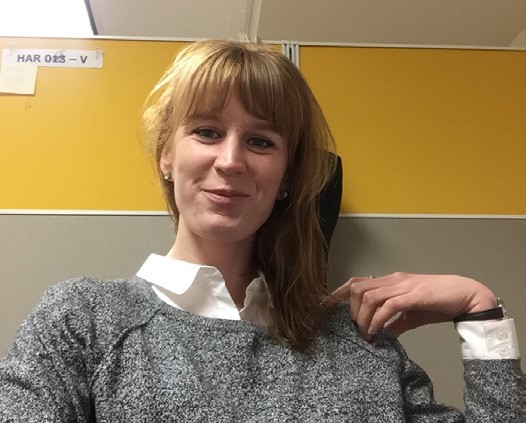
Integrity receives a lot of lip service in contemporary times. Integrity might be referenced in the actions of statesmen. Integrity might also be celebrated through the actions of individuals faced with moral dilemmas in wartime. But integrity can also refer to the actions of organizations that recognize and seek to address past wrongs. This demonstration of integrity is one that is often more difficult to execute in our modern world, thereby making it a grander illustration of integrity as upholding values in the current age of disinformation requires a strong sense of responsibility and the wherewithal to discern what is right and good from what is a tainted version of the truth and harmful.
Recognizing the sacredness of these ancestral lands, the NorthEast Washington Educational Services District (NEWESD) 101, an organization built on providing educational services throughout Northeast Washington, has officially acknowledged the tribes that formerly owned Spokane:
NEWESD 101 is situated on the ancestral land of the Plateau Peoples who inhabited the highlands between the Rocky Mountains and Pacific coast, a vast area including portions of Eastern Washington. Some of the region’s tribes include the Spokane, Coeur d’Alene and Kalispel bands, along with those making up the Confederated Tribes of the Colville Reservation, who have occupied these lands since time immemorial.
NEWESD 101 acknowledges the resiliency of these Indigenous peoples who have suffered trauma brought on by centuries of colonialism and racism. We extend our deepest respect and gratitude to Native peoples as original stewards of this land…
Through this statement—one that moves beyond mere rhetoric—NEWESD 101, an organization composed of individuals representing different regions, demonstrates the power of integrity as the statement is now read before meetings and presentations. In recognizing the original inhabitants of the land it occupies, NEWESD adds to a sense of place that each employee, teacher, and student might embrace, providing the regional communities at large a sense of value. The land NEWESD oversees has a history that has shaped and continues to shape the regional communities, and as untruths run abundant, this act of integrity has been twofold, not only recognizing the sanctity of the ancestral lands and the genocidal history that sought to displace indigenous peoples but also defining us by way of connecting us to the land through our history—a history that in turn was created by the land.
For those of us living in Northeast Washington, we are surrounded by a collection of landscapes, people, and cultures. Geographies vary: From the northern counties such as Stevens or Pend Oreille, where we find peaceful waterways, to the southern counties like Columbia, Walla Walla, and Asotin, with their rugged territory and thriving agriculture, to the Eastern side of the state which is home to diverse landscapes of foothills and waterways. For many Washingtonians, these unique landscapes have cultivated a sense of place as the large expanse that is Northeast Washington offers life through nature. This sense of place, however, has a long history beginning with the indigenous peoples that first settled Northeast Washington.
In the North, the Okanagan-Colville tribes, a Plateau group, relied upon salmon as a major source of food and followed their food sources (Okanagan, 2021). The salmon, harvested annually and found in the Columbia River and its tributaries, were integral to the tribes’ livelihood. As a result, the salmon and the Columbia River were celebrated through folklore and cultural practices. Another nearby tribe that depended on the ecological regime of the Columbia and its tributaries is the Spokane Tribe which also harvested salmon populations annually before the Spokane River was dammed. Further south, another Plateau tribe, the Nez Perce or Nimi’ipuu as they self-identify, who travelled as far away as Celilo Falls yearly for the salmon run. These tribes persisted in their commitment to cultures shaped by nearby rivers and surrounding habitat; their kinship with the Inland Northwest has stood the test of time.
Perhaps then, one of the greatest demonstrations of integrity is that of the Native Americans and their resilience in preserving their culture; cultures that were shaped by the lands we deem as home and the land that continues to mold us.
Nora Vralsted-Thomas is the Program Assistant for the Center of Special Education Services at NEWESD 101 where she has most recently become involved with PACE. Nora first learned of PACE during her work as a Job Developer for The Arc of Spokane. Prior to her work at The Arc, Nora worked internationally as an English teacher in Russia and Peace Corps Volunteer in Morocco. She also completed service with AmeriCorps VISTA Spokane.
References
(2021). Okanagan. Countries and their cultures. Retrieved April 27th, 2021 from https://www.everyculture.com/North-America/Okanagon.html.
(2021). Nez Perce Tribe. NezPerce. Retrieved May 4th, 2021 from https://nezperce.org/about/.
(2021). Remembering Chief Homer St. Francis. Bigorrin. Retrieved May 4th, 2021 from http://www.bigorrin.org/archmn-cayuse.html.
(2020). American Indians in Washington. Native Languages of the Americas. Retrieved May 4th, 2021 from http://www.native-languages.org/washington.html.
Britannica, T. Editors of Encyclopaedia (2020). Nez Percé. Encyclopedia Britannica. https://www.britannica.com/topic/Nez-Perce-people.
Tate, C. (2013) Cayuse Indians. History Link. Retrieved May 4th, 2021 from https://www.historylink.org/File/10365.
Please note: PACE invites volunteers to write on the trait of the month. Opinions and views do not necessarily reflect PACE or constitute an endorsement by PACE of the content.

